Architect in the spotlight: architectenbureau joris gijsenberg
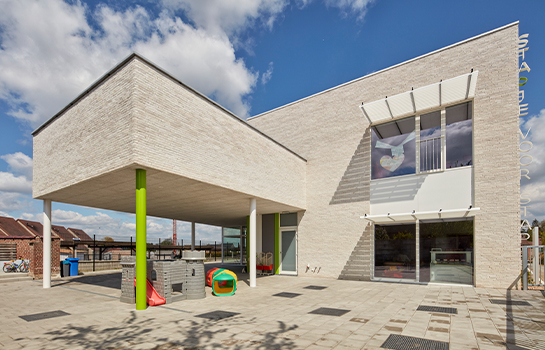
Contextualism, functionality, spatiality, and sustainability – these four pillars describe the design vision of the Tienen-based architectenbureau joris gijsenberg [joris gijsenberg architectural firm] best. These core values are what drive the firms’ founders, Architectural Engineer Joris Gijsenberg and Architect Kevin Ceux. What’s more, these four pillars also plainly feature at the Stapje voor Stapje kindergarten in Hakendover (Tienen), although the location did present the architectural firm with a challenge.
’The Stapje voor Stapje kindergarten is located on a fairly remote plot. It’s only accessible via a 2.5-metre wide path and is just behind the primary school, bordered on all sides by the back gardens of the surrounding streets’, says Joris Gijsenberg. ’The former building was a prefab construction with a playground that was only 250 m². Things couldn’t stay like that.’
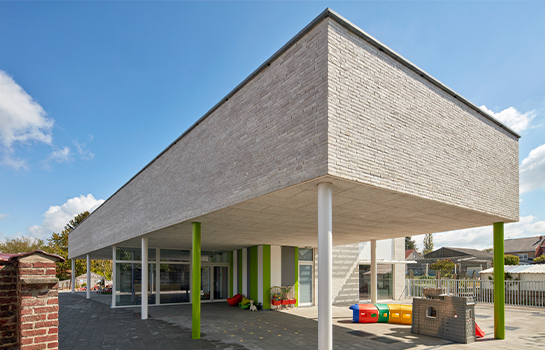
Functional spaces
The architectenbureau joris gijsenberg design transformed the school into a breath of fresh air for the kindergarteners, who see the school as a fun and cosy second home. The indoor area more than doubled, and the surface of the outdoor playground went from 250 m² to 525 m². ’Given the relatively packed construction programme planned for the same confined construction area, vertical construction was essential for coming up with a compact build design that would produce a feasible, functional project. Consequently, we decided to incorporate several levels, which also gave us the opportunity to create an additional rooftop playground.’
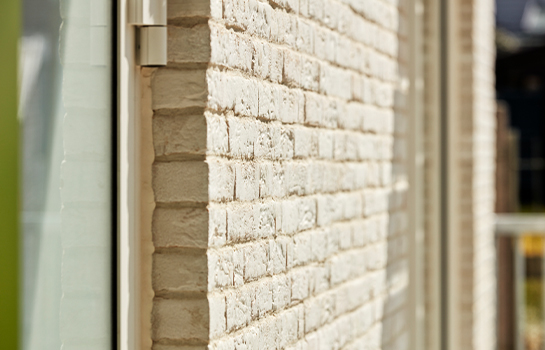
Spatial landmark
Contextualism and spatiality were also key elements in the Stapje voor Stapje project. Since the school is situated on a rear plot, and the building leaves a major footprint on it, architectenbureau joris gijsenberg’s job was to find the perfect materials to create a calm yet distinctive look. ‘Contextually speaking, the design had to achieve a balance between neutrality and a unique identity.’ By maximising the building’s vertical and horizontal elements, plus the selection of facade materials – we feel like we’ve succeeded on that front.’
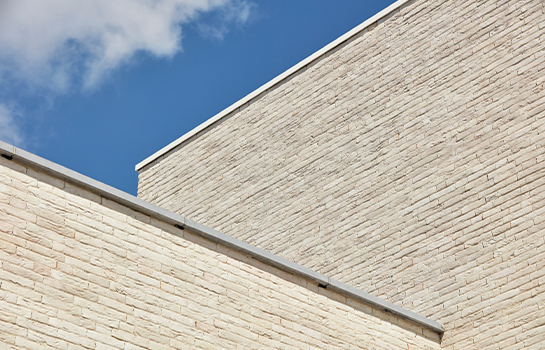
A haven of peace and tranquillity
’By using Nelissen’s facade brick in blanco, we succeeded at distinguishing the building as a familiar haven of peace and tranquillity for kids. Our first priority was to find a brick that wouldn’t come over as too aggressive. A lighter brick helped create an illusion of more space, which automatically singled the blanco out as the perfect facade brick. The brick’s white finish radiates a sense of strength and peace. The effect of the blanco’s brick adhesive bonding is reinforced by the white exterior joinery, which playfully yet subtly contrasts with the sparing use of coloured-panel facade cladding. This splash of colour briefly recurs in the covered playground’s support columns.’ That means that the building retains a certain neutrality in terms of colour, which also happens to make the colours embodied by the children at play stand out even more. ‘With the blanco brickwork as a backdrop, the colour palette of children playing really pops,’ says Gijsenberg.
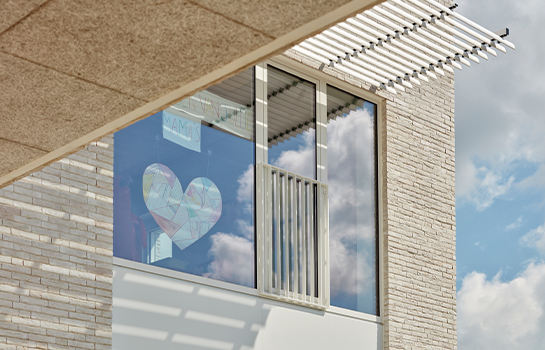
Sustainable selection
Architectenbureau joris gijsenberg decided to use brick adhesive on the blanco. ’We applied a generous amount of adhesive, which gives the facade a thin-joint look. The N70/5 size gives the overall appearance a boost; plus, it made it possible for us to retain a certain cavity wall size, allowing for more wall insulation and maximisation of the usable space. The decision to work with bricks was easily made too. ’We’re both big fans of brick masonry. Bricks are a great product in terms of building ageing. We were keen to build a building that would last several generations, so we went for a long-term, sustainable option.’
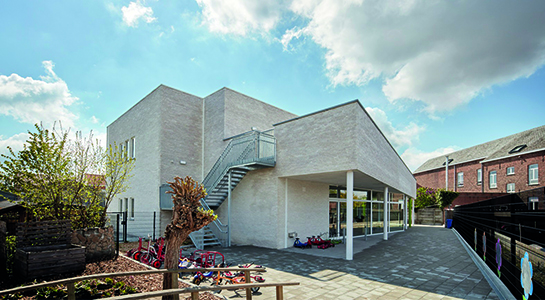
Childhood nostalgia
Architectenbureau joris gijsenberg feels good looking back on the Stapje voor Stapje project. ’We’re chuffed with the result. The building has just the right look, in our opinion. It all fits!’ Joris Gijsenberg also had good things to say about the collaboration with the school. ’Working with a school team on a project automatically entails a diversity of opinions and perspectives. It’s a great way to settle on a fun project that’s also feasible. Besides, getting the chance to design a school project is always a treat. It’s a reliable opportunity to combine the functional with a playful twist.’
